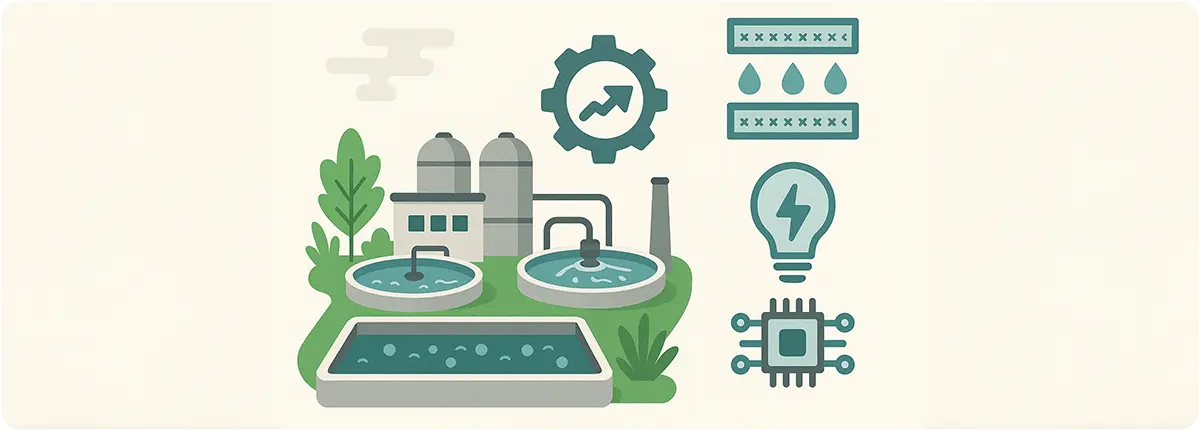With freshwater resources under increasing stress, seawater treatment (also known as desalination) has become a critical solution for securing reliable drinking water in arid and coastal regions. Countries in the Middle East, North Africa, and Southern Europe heavily rely on these systems, and today more than 100 million people worldwide obtain potable water from seawater treatment plants.
This article explores the principles of seawater treatment technologies, their applications, and the central role that high-pressure pumps play in ensuring performance and efficiency.

PRINCIPLES OF SEAWATER TREATMENT SYSTEMS
Thermal Processes
- Multi-Stage Flash (MSF): Water is evaporated in stages and condensed to produce fresh water.
- Multi-Effect Distillation (MED): Operates at lower temperatures, using successive effects of vapor to enhance efficiency.
Membrane-Based Technologies
- Reverse Osmosis (RO): Seawater is forced through semi-permeable membranes under high pressure to remove salt.
- Nanofiltration (NF): Used for lower salinity sources where partial softening is needed.
Fact: More than 65% of all seawater treatment facilities worldwide use reverse osmosis as their core technology.
THE CRITICAL ROLE OF HIGH-PRESSURE PUMPS
High-pressure pumps are the heart of any reverse osmosis seawater treatment system. They supply the energy required to overcome osmotic pressure and push seawater through the membranes.
- Operating Pressure: Typically 55–85 bar for seawater, with some applications exceeding 100 bar.
- Pump Types:
- Multi-stage centrifugal pumps
- Positive displacement (piston/plunger) pumps
- Material Requirements: Due to the corrosive nature of seawater, materials such as duplex stainless steel, super duplex, and titanium are commonly used.
Formula – Pump Power Requirement:
P = (Q × ΔP) / η
Parameters:
• Q: Flow rate (m³/s)
• ΔP: Pressure differential (Pa)
• η: Pump efficiency
Engineering Note: In a 1,000 m³/day RO plant, pump-related energy consumption can represent 40–50% of total operating costs.
ENERGY EFFICIENCY AND RECOVERY TECHNOLOGIES
Because pumping accounts for most of the energy demand, modern seawater treatment facilities integrate energy recovery devices (ERDs) to cut costs and improve sustainability.
- Isobaric Chambers (Pressure Exchangers): Achieve up to 95% energy recovery.
- Pelton Turbines: Use the energy of the brine stream to drive auxiliary equipment.
- Turbochargers: Boost pressure at the pump inlet to reduce energy needs.
Energy Consumption Comparison
| Technology | Specific Energy (kWh/m³) |
|---|---|
| Thermal (MSF, MED) | 10 – 25 |
| Reverse Osmosis (classic) | 4 – 6 |
| RO + ERD | 2 – 3 |
APPLICATIONS
- Large-Scale Plants: The Ras Al-Khair plant in Saudi Arabia produces over 1 million m³/day, making it one of the largest in the world.
- Tourism Sector: Mediterranean resorts and hotels rely on compact RO units for clean water supply.
- Industrial Use: Petrochemical plants, refineries, and power stations depend on seawater treatment for operational reliability.
ENVIRONMENTAL CONSIDERATIONS AND FUTURE TRENDS
- Brine Management: Discharge of concentrated brine poses ecological risks. Solutions include dilution, crystallization, or mineral recovery.
- Renewable Integration: Solar-assisted RO, wind-powered pumping, and wave energy are emerging as sustainable options.
- Next-Generation Membranes: Graphene-based membranes promise lower energy requirements and higher durability.
CONCLUSION
Seawater treatment systems are evolving rapidly, combining high-pressure pump technology, advanced membranes, and energy recovery solutions to provide sustainable access to fresh water. In the near future, facilities powered by renewable energy and equipped with next-generation materials will play a vital role in addressing global water scarcity.